
RUN TO THE HILLSIDE — HILLSIDE VILLAGE
Last autumn, I had a stint house-sitting in El Sereno. I spent much of my time exploring that neighborhood with a dog named Dooley who belongs to the owners of the home I was… sitting. This fall I again returned to the Eastside and Dooley I resumed our epic walks. This time we explored Arroyo View Estates, City Terrace, East Los Angeles, El Sereno, Garvanza, Happy Valley, Hermon, Highland Park, Lincoln Heights, Montecito Heights, Monterey Hills, Rose Hill, University Hills, and on one afternoon and early evening, a neighborhood considered by many to be part of El Sereno — Hillside Village.
HILLSIDE VILLAGE

Hillside Village is a small neighborhood surrounded by the rest of El Sereno to the north and east, University Hills to the east, East Los Angeles and Boyle Heights to the south, and Lincoln Heights to the west. For what appears to this nonpartisan outsider to be nothing more than a tempest in a teapot, the argument over whether or not Hillside Village is part of El Sereno is surprisingly heated — at least between a few zealous parties in LA-32 in one corner and the El Sereno Historical Society in the other.
I can understand some of the arguments of both sides. Ever since Valley Village split from North Hollywood back in ’39 other Los Angeles neighborhoods have followed suit whenever a group of residents decides that changing their name will at least distance them from perceived negative associations — if not actually change anything about where their neighborhood is. On the other hand, elevating or reviving a forgotten tract name to neighborhood status — or coming up with a new neighborhood name (as will the Empowerment Congress‘s Naming Neighborhoods Project) seems like it could be an expression of something more positive. Whatever the case may be, the “Hillside Village” designation has been around for at least five decades and doesn’t show any signs of going away so without further adieu, here’s a brief history of the area…
EARLY HISTORY OF THE AREA
13,000 years ago, roughly the time when the first people arrived in what’s now Los Angeles, there was no El Sereno and no Hillside Village. We don’t know what these people called the area, if anything, nor what they even what they called themselves. About 3,500 years ago, or so, and the ancestors of the Tongva arrived from the Sonoran Desert, ultimately establishing the villages of Otsungna to the east and Yaangna to the west. The Tongva reign ended shortly after Catlonian Gaspar de Portolà‘s overland expedition passed through the area in 1769, setting the stage for the Spanish Conquest. In 1771, the conquerors constructed Mission San Gabriel Arcángel, first in Whittier Narrows. In 1776 the mission was moved to its present location in San Gabriel, nine kilometers east of what’s now Hillside Village. A few years later, in 1781, El Pueblo de Nuestra Señora la Reina de los Ángeles del Río de Porciúncula was founded about five kilometers to the west of the neighborhood’s location.
The area that now comprises Hillside Village straddled Mission lands to the east and Pueblo lands of the west. Spanish rule ended when Mexico achieved independence in 1821 and the mission holdings were secularized. Mexico’s rule would prove even shorter than Spain’s and ended in 1848 when California was conquered by the US. In 1850, California entered the union and Los Angeles incorporated as a city and neighboring Lincoln Heights was one of the city’s first suburbs. The rest of what’s now Hillside Village was annexed as part of the Bairdstown Addition of 10 June 1915, which also included most of the rest of El Sereno and what’s now University Hills.
UNION PACIFIC RAILROAD & HILLSIDE VILLAGE’S INDUSTRIAL SECTION
The southern border of the Hillside Village is generally formed by a Union Pacific freight train line. Los Angeles’s borders extend just a bit to the south to include a small, rail-adjacent industrial area north of East Los Angeles along Worth Street between Indiana Street and Miller Avenue that’s home to the beguiling Roscoe Moss property. The Roscoe Moss facility is a red brick building that was constructed in 1925 and (more than any pretentious bar) looks like it should be lit with Edison bulbs.
Anyway, this industrial corridor is situated along a Union Pacific freight line which that company acquired with its acquisition of Southern Pacific in 1996. Southern Pacific was the first transcontinental railway to reach Los Angeles, back in 1876. I don’t believe (but I’m not sure) that this section of the rail was part of the original route connecting the city to San Francisco although I believe that I read that it was installed in the 1880s. Back then the train also carried passengers to Los Angeles and in 1885, when the Atchison, Topeka and Santa Fe Railroad broke their rival’s monopoly, a rate war saw trips from Kansas City, Missouri drop to just $1 per passenger. As I wrote that last sentence, I heard its whistle blowing although, as I said, it’s a freight train now so there are probably no rich folks eating in fancy dining cars.
USC HEALTH SCIENCES CAMPUS
On the other side of the tracks are some other older buildings, including several properties owned by the expanding USC Empire, whose massive and ever-expanding LAC+USC Medical Center is located just south of the tracks in Boyle Heights. The first of the USC Health Sciences Campus buildings was the Burrell O. Raulston Memorial Research Building, which opened in Boyle Heights in 1952. Over the decades that followed, USC’s medical campus expanded greatly — in some cases acquiring already extant buildings and repurposing them and in other cases building new ones. The University of Southern California Dorothy and Hugh Edmondson Research Building was built in 1961. Looking at it from the outside it looks like it’s mostly used as a storage warehouse these days. To the east of that is the Valley Boulevard Building (which was built by the County for some other purpose). East of that is another group of buildings with USC signage dating from 1930. I can’t tell what they’re used for.
ASCOT SPEEDWAY

After the arrival of the rail, the next big noise in the area was a midget car track that opened on 24 January 1924 — New Ascot Speedway. It was so named because the first Ascot Speedway had opened in the Florence neighborhood in 1907. For four years it struggled to draw sufficient crowds when the Glendale American Legion stepped in and subsequently convinced AAA to get behind the operation, at which point it became the Legion Ascot Speedway. In 1936, after a total of 24 race car drivers had died on the track, the Glendale Legion decided to withdraw from the deadly operation. It was then, finally, rebranded the Ascot Motor Speedway and soldiered on until one final, deadly accident on 25 January of 1936 that took the lives of Al Gordon and Spider Matlock. After that, the speedway was closed. In April, a janitor deliberately burned the grandstand to the ground, conflagrating that chapter in one fiery swoop.
A few years passed before most of what’s now Hillside Village was subdivided. Most of the homes were constructed between 1940 and 1942 in tracts with unglamorous names like “Tract No. 23799,” “Tract No. 6837,” and my favorite, “Tract No. 12323.” I’m not sure when folks started calling what was originally part of the El Sereno neighborhood “Hillside Village.” [UPDATE: as early as 1941] At least as early as the 1950s The El Sereno Star listed Hillside Village as being one of the communities that it covered alongside West Alhambra, Emery Park, and Rose Hill (although spelled “Rose Hills)”. There was also formerly a Hillside Village Market at least as early as 1949. It does have a fairly distinct World War II-era suburban vibe — not that homogeneous sameness necessarily does a neighborhood make.
It’s just that most of it looks like it stepped out of an episode of The Wonder Years — although it seems that many Hillside Villagers are converting their thirsty and boring carpets of grass into xeriscaped lawns or other more interesting options.
Still, I’m never going to refer to it as “The Beverly Hills of the Eastside” unless I want to illustrate why some are rubbed the wrong way by the neighborhood’s reputation as an oasis of pretense in an otherwise pretty unpretentious area.

Get this and get it straight — Hillside Village has a lot in common with the rest of the Eastside and comparatively little with the Westside. There are seemingly as many angry dogs as people (78% Latino of any race, 16% Asian, 5% non-Latino white, and 1% black) and I saw none being carried in Coach handbags. As I walked down Valley Boulevard, a lowrider bounced past me — hardly a typical site in Beverly Hills or even laid back Palms. School was out for a winter break so it was probably quieter than usual but that heavy silence was broken by an ice cream truck bumping that 1820s jam, “Turkey in the Straw” as well as both crowing roosters and squawking parrots. Actually, it was so quiet for the most part that at one point I thought that I hear crickets breaking into song even though it was still light out. That noise turned out, after investigation, to be the sound of a loose belt in the machinery at a small strip mall.
Although none of it made me think that I was magically transported into the Westside, there were a few signs that this neighborhood was unlike the others. I smelled no weed being smoked (although it was surely taking place) and instead of hearing banda or rap coming from passing cars I only heard Bob Seger‘s “Old Time Rock and Roll” and The Cars‘ “Just What I Needed.” Coincidentally, both songs were released in 1978 and in researching the neighborhood I found a map that someone made of Eastside gang territories from that year. It showed most of “The Village” being claimed by an organization known as “Hillside.” Although as Eastside barrios go Hillside Village is relatively un-scarred by placas, I did see numerous ones from El Sereno Rifa and none from Hillside suggesting that Hillside are no more and that the Locke Street clika doesn’t recognize Hillside Village as being distinct from El Sereno. Neither, then, did the media who when President Carter visited, referred to the area (erroneously and ignominiously) as “East L.A.”


There are LADOT neighborhood signs designating the area “Hillside Village” that went up in 1998. However, the El Sereno Historical Society alleges in one of the least-subscribed-to conspiracy theories (on their GeoCities-esque website) that they are counterfeit. Not exactly “through the looking glass” but there you have it.
ASCOT HILLS PARK
Although located just north of Hillside Village, the 93 acre Ascot Hills Park is practically the community’s backyard. Plans to turn the space into a park began in 1930 but it instead was used as an LADWP training center for many years — visible to people not part of that utility mafia through bars and fences (much like Los Feliz‘s tantalizing-but-off-limits-to-the-public Rowena Reservoir). Before it opened as a park, the largest park on the Eastside was a cemetery — that is, if one conveniently excludes the much larger Ernest E. Debs Regional Park in Montecito Heights from one’s definition of the Eastside for the sake of a good quote (e.g. “Until the groundbreaking for the park in 2005, the largest open space in East Los Angeles was Evergreen Cemetery. This sent the wrong message to our children. If you want open space, you have to die first.” — La JaJa Kids 丫丫園地)
SCHOOLS
The main school in the neighborhood is Woodrow Wilson High School. The high school first opened in 1937 at what’s now El Sereno Middle School. After outgrowing that location, it relocated to the present campus in 1970. The school’s architecture was designed by the great local architect Paul Revere Williams. Twice a year, at homecoming and graduation, the school puts on a fireworks show. There’s also Multnomah Elementary School. I don’t have any other information about it but it didn’t look that interesting from the street and probably shouldn’t be to anyone who’s not enrolled there or related to someone who is.
HOUSES OF WORSHIP
There’s a huge worship hall on Druid Street. From it’s location, you might expect the high priest to be Julian Cope but because it’s actually a Presbyterian church — a denomination with roots in decidedly un-druidic Calvinism. The Los Angeles Christian Presbyterian Church (나성한인교회) congregation moved into this mega-church in 1984.
The building that Ming Ya (明月居士林) is located in was constructed in 1951 and was once the home of the aforementioned Roscoe Moss Company (now located across the boulevard). The last tenants before the Buddhists were Electronics Division of the Thomas & Betts Corp. Ming Ya acquired the building around twenty years ago and even though it seemed to be all locked up and empty, the smell of joss sticks still hung heavy in the air. I’ve still yet to go inside but in my experience, most Buddhist temples are worth a peek — and maybe more.
VILLAGE EATS
There are a few restaurants and markets located in Hillside Village, most on or near Valley Boulevard. They include Big Panda, Cha Cha Chili, Johnnie’s Market, King Torta, Olympic Donut, Roong-Fah Thai Chinese Food, Tony’s Subs & Salads, and Valeria’s Market. Cha Cha Chili began in 2009 as Red Hot Kitchen and I’ve eaten there on another occasion. It’s a tiny Korean/Mexican place and the tacos are good. The tortas are cheap and delicious at King Torta — in my opinion it’s a real gem of the area. Johnnie’s Market also sells sandwiches although I’ve only bought water for Dooley there (after I thought I’d broken her with an epic walk). It was established in the 1950s by Johnnie Costentino. Last year I asked the man behind the counter how long it’s been run by current owners — Kim and Winnie Kong — and he guessed 38 years or so. Valeria’s Market also sells its own food, including at least tamales.
GETTING THERE AND AROUND
The small neighborhood is served well by public transit, including the DASH El Sereno/City Terrace line and Metro‘s 76, 251/252, and 256 lines. Although Walkscore has a separate entry for neighboring University Hills, they lump Hillside Village in with the rest of El Sereno, to which they only give a walk score of 53. Their transit score for the neighborhood is 41 and the bike score is 39. Nowhere within Hillside Village is more than half a kilometer from a bus line and although there might not be many bike lanes, it’s all quite easily biked and only Eastern Avenue, Soto Street, and Valley Boulevard see any significant automobile traffic. I suppose though that due to the limited number of businesses one might have to leave the neighborhood to accomplish many errands.
HILLSIDE VILLAGE ARTS SCENE
Although there was a skate punk band called Hillside Village I have doubts about them being from the neighborhood or their name being a reference to it (UPDATE: They were, in fact, from the neighborhood). I’m certain, however, that there are musicians from the neighborhood because I heard someone practicing drums somewhere and on a walk through Ascot Hills Park on a previous occasion, Dooley was entranced by a high schooler playing the saxophone at a bus stop.
As far as film, there are no movie shops, no theaters, no films shot in part or whole there, nor any filmmakers or actors from there that I know of. If I’m missing something, please let me know in the comments! Same goes for games, literature, theater, dance, and the other arts.
There is a little bit of public art in the neighborhood. In front of Los Angeles Fire Department 16, there’s one statue of a firefighter and statue or figurine of a dalmatian (that Dooley took an entirely wholesome interest in). One plaque on the station’s wall is dedicated to Everett H. Young, who died in the line of duty on 12 November 1947 (the same day that the Spruce Goose made its only flight). Another informs us that the fire station was built in 1962.


There’s also José Antonio Aguirre‘s A Luminaries Journey, a collection of public art pieces installed near the Valley Boulevard Bridge honoring significant figures in Chicano history. And wherever there’s freight rail, there’s invariably street art (or at least graffiti) although I’ve never really explored along the rails in the area.
Support Eric Brightwell on Patreon


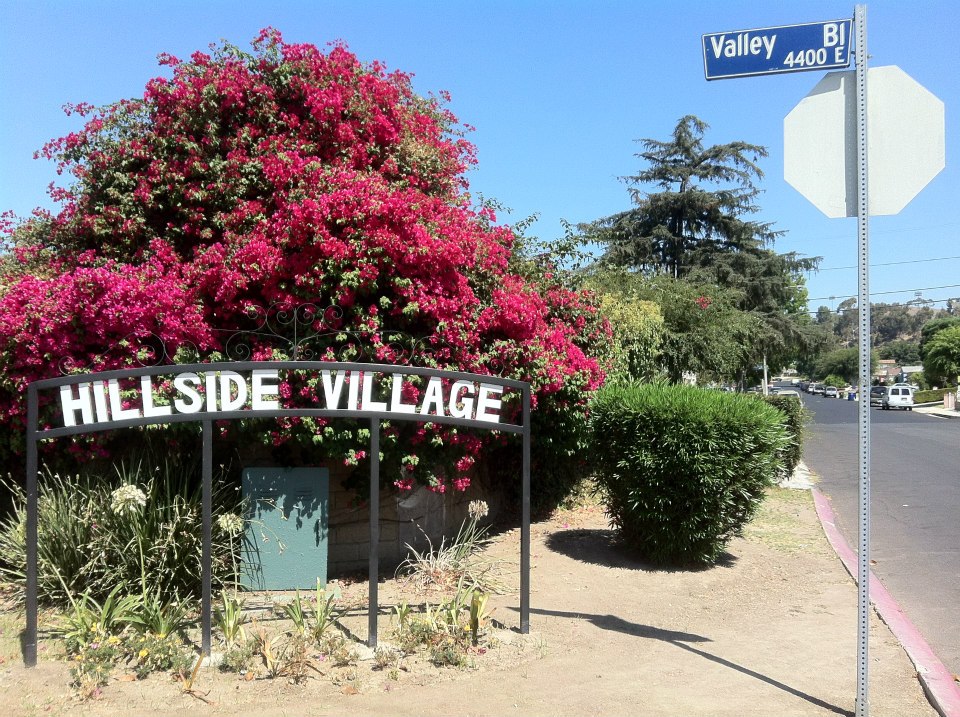


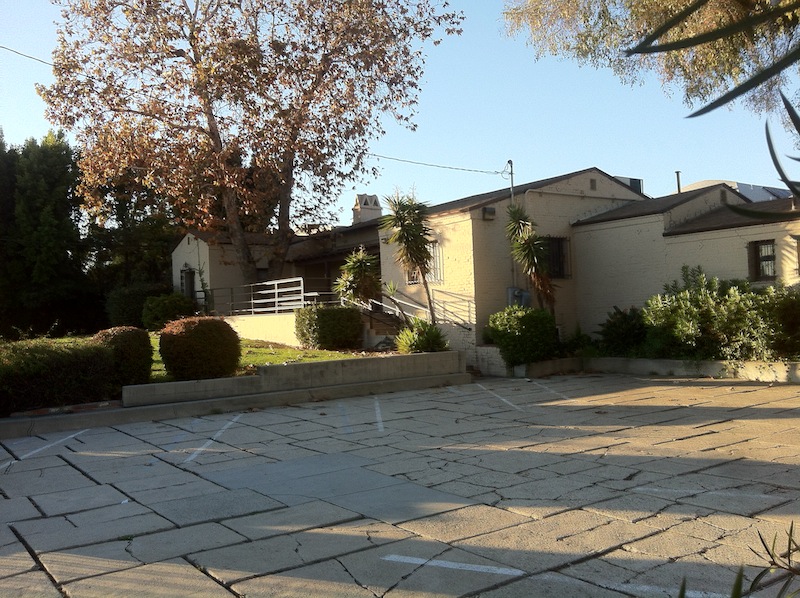

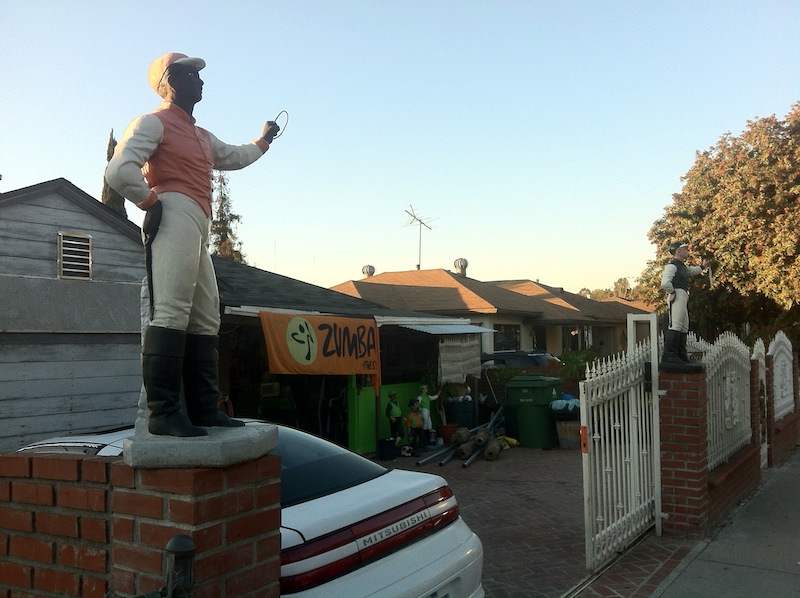

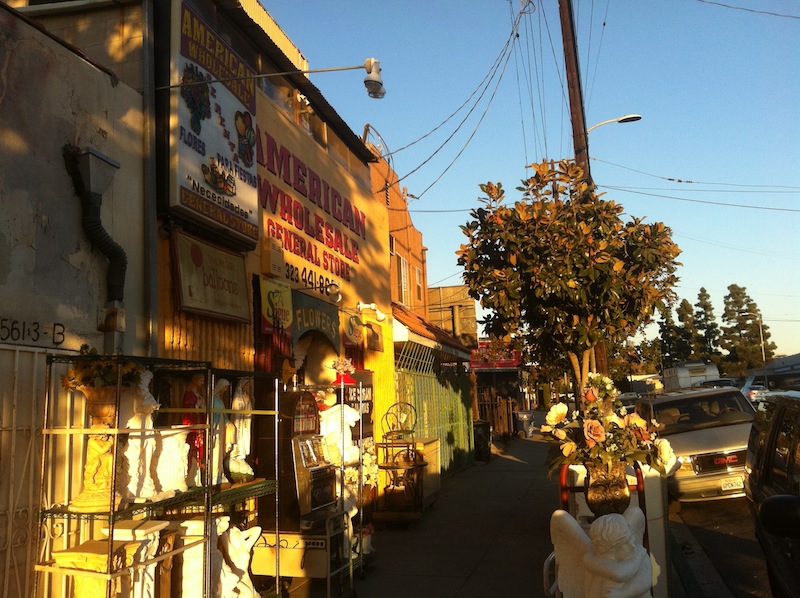


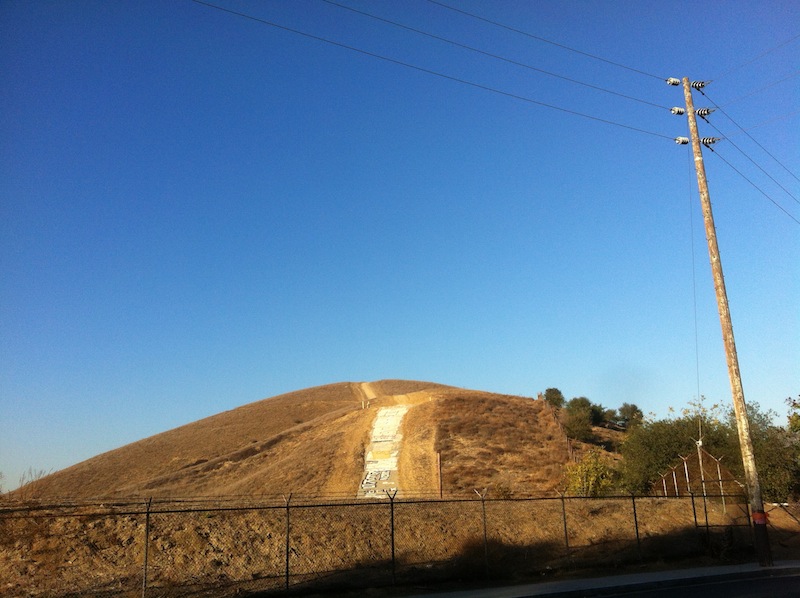



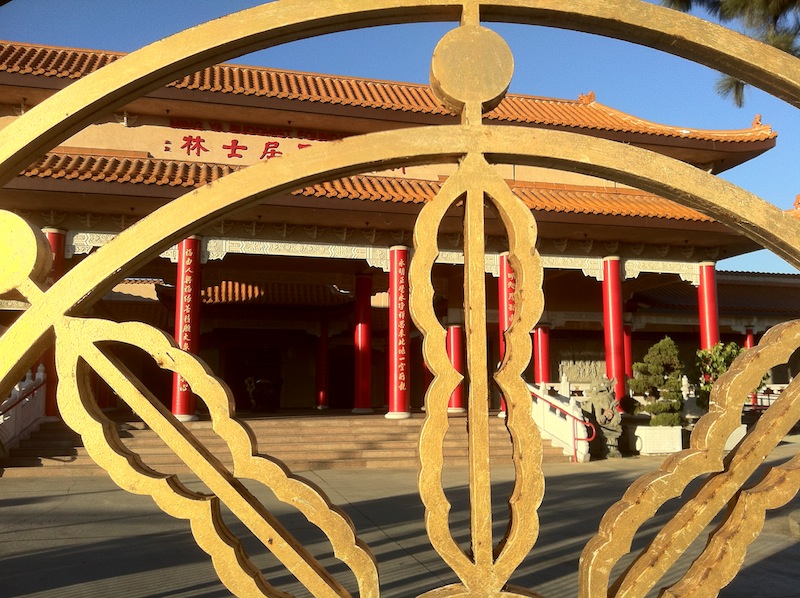
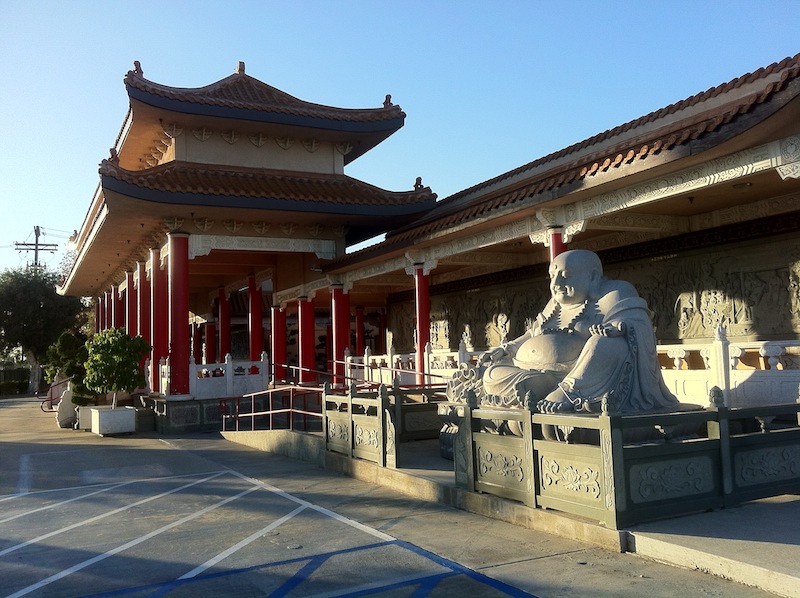
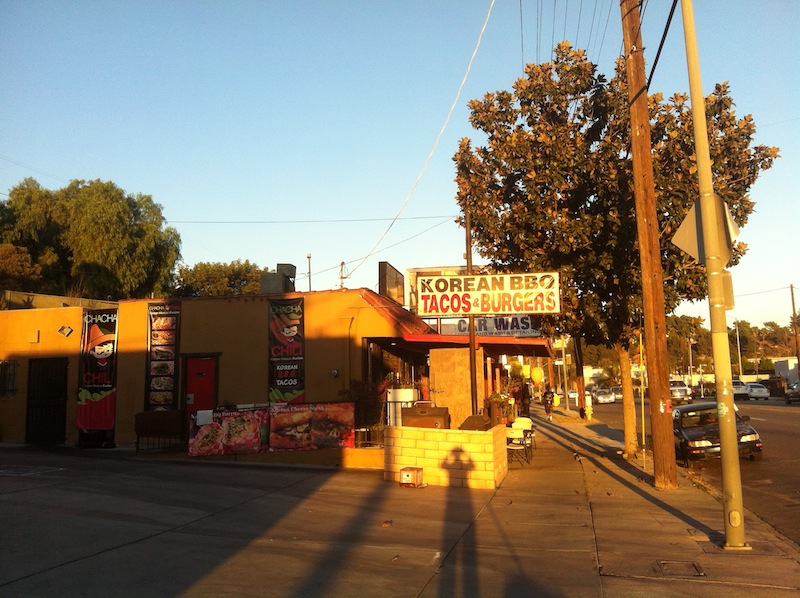
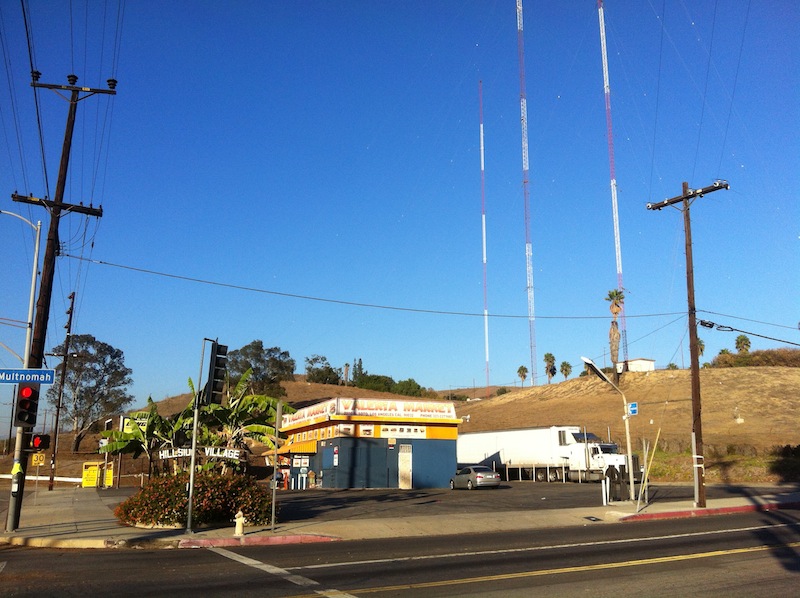
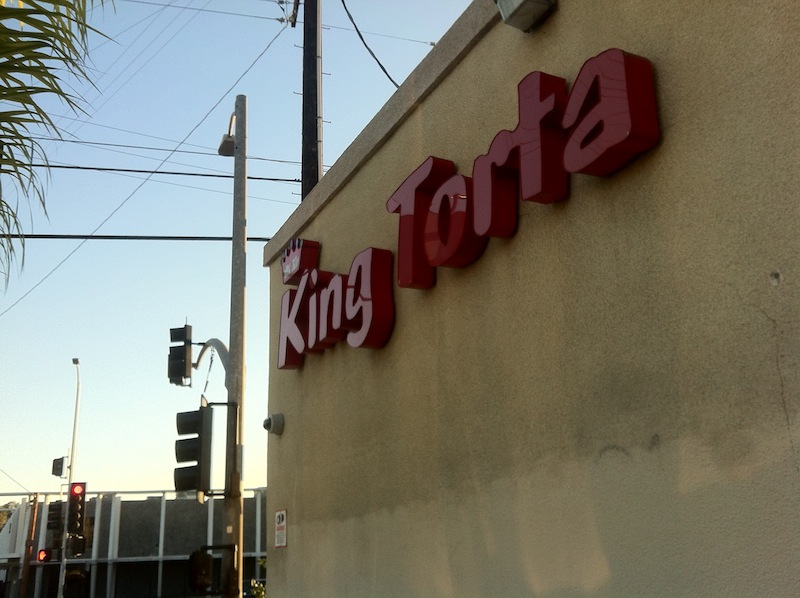



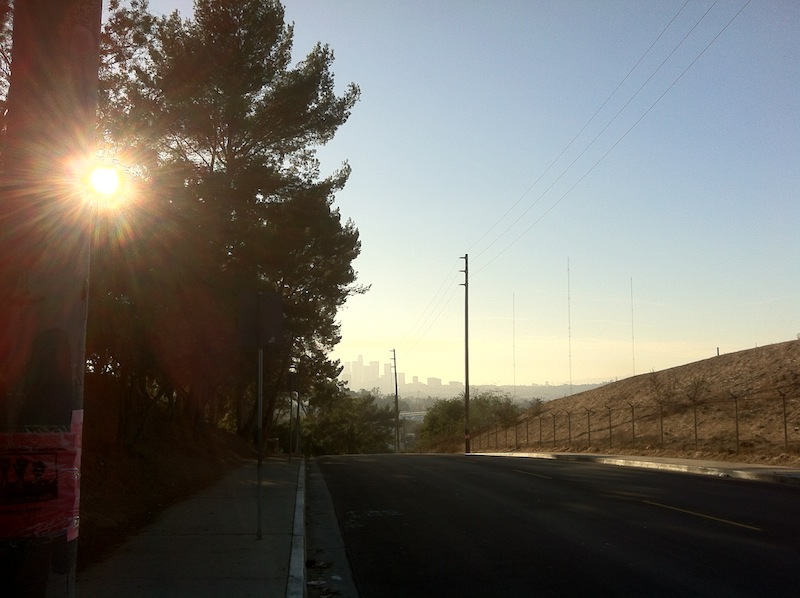


8 thoughts on “California Fool’s Gold — Exploring Hillside Village”